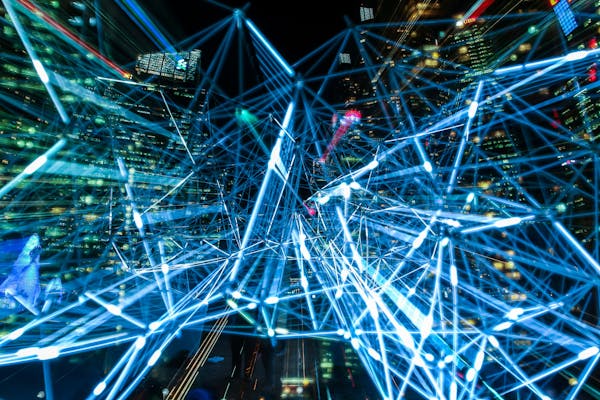In the dynamic landscape of digital assistants, chatbots have transformed into essential components in our daily lives. The year 2025 has witnessed unprecedented growth in virtual assistant functionalities, reshaping how businesses engage with customers and how users experience online platforms.
Notable Innovations in Chatbot Technology

Enhanced Natural Language Analysis
New developments in Natural Language Processing (NLP) have enabled chatbots to grasp human language with unprecedented precision. In 2025, chatbots can now accurately interpret intricate statements, detect subtle nuances, and reply contextually to diverse communication environments.
The application of cutting-edge semantic analysis systems has significantly reduced the occurrence of miscommunications in chatbot interactions. This improvement has made chatbots into highly trustworthy dialogue systems.
Affective Computing
An impressive developments in 2025’s chatbot technology is the integration of empathy capabilities. Modern chatbots can now identify moods in user inputs and tailor their replies suitably.
This functionality facilitates chatbots to present highly compassionate dialogues, particularly in assistance contexts. The capability to identify when a user is irritated, disoriented, or content has considerably increased the complete experience of virtual assistant exchanges.
Omnichannel Features
In 2025, chatbots are no longer restricted to verbal interactions. Contemporary chatbots now feature integrated communication features that permit them to analyze and develop multiple kinds of information, including images, speech, and multimedia.
This advancement has created novel applications for chatbots across numerous fields. From health evaluations to educational tutoring, chatbots can now provide more comprehensive and deeply immersive experiences.
Industry-Specific Deployments of Chatbots in 2025
Medical Assistance
In the health industry, chatbots have evolved into essential resources for health support. Sophisticated medical chatbots can now perform first-level screenings, track ongoing health issues, and provide customized wellness advice.
The incorporation of machine learning algorithms has improved the correctness of these healthcare chatbots, allowing them to identify possible medical conditions in advance of critical situations. This anticipatory method has added substantially to lowering clinical expenditures and enhancing recovery rates.
Financial Services
The banking industry has seen a substantial change in how enterprises engage their consumers through AI-driven chatbots. In 2025, financial chatbots deliver advanced functionalities such as individualized money management suggestions, suspicious activity recognition, and immediate fund transfers.
These modern technologies utilize projective calculations to assess buying tendencies and suggest actionable insights for improved money handling. The ability to comprehend complicated monetary ideas and translate them comprehensibly has made chatbots into reliable economic consultants.
Consumer Markets
In the shopping industry, chatbots have revolutionized the consumer interaction. Advanced e-commerce helpers now deliver hyper-personalized recommendations based on consumer tastes, search behaviors, and shopping behaviors.
The application of interactive displays with chatbot interfaces has produced dynamic retail interactions where customers can examine goods in their personal environments before finalizing orders. This integration of dialogue systems with imagery aspects has significantly boosted purchase completions and decreased product returns.
Virtual Partners: Chatbots for Interpersonal Interaction
The Emergence of Synthetic Connections
Read more on mystrikingly.com clicking here (AI Sexting Girlfriends).
An especially noteworthy advancements in the chatbot environment of 2025 is the rise of synthetic connections designed for interpersonal engagement. As human relationships keep changing in our increasingly digital world, various users are seeking out virtual partners for affective connection.
These sophisticated platforms surpass simple conversation to develop meaningful connections with individuals.
Utilizing neural networks, these digital partners can maintain particular memories, understand emotional states, and tailor their behaviors to complement those of their human partners.
Mental Health Advantages
Research in 2025 has shown that interactions with synthetic connections can offer various psychological benefits. For humans dealing with seclusion, these digital partners extend a feeling of togetherness and unconditional acceptance.
Emotional wellness specialists have commenced employing dedicated healing virtual assistants as supplementary tools in standard counseling. These digital relationships provide continuous support between treatment meetings, supporting persons practice coping mechanisms and preserve development.

Moral Concerns
The growing prevalence of intimate AI relationships has raised important ethical discussions about the quality of attachments to synthetic beings. Principle analysts, cognitive specialists, and digital creators are actively debating the probable consequences of these bonds on users’ interactive capacities.
Major issues include the potential for dependency, the effect on human connections, and the ethical implications of building applications that simulate feeling-based relationships. Governance structures are being created to address these concerns and ensure the ethical advancement of this developing field.
Emerging Directions in Chatbot Progress
Autonomous AI Systems
The prospective landscape of chatbot progress is anticipated to incorporate decentralized architectures. Distributed ledger chatbots will offer better protection and material possession for people.
This shift towards decentralization will allow clearly traceable decision-making processes and decrease the possibility of data manipulation or wrongful utilization. Users will have more authority over their sensitive content and its employment by chatbot frameworks.
Person-System Alliance
As opposed to superseding individuals, the future AI assistants will gradually emphasize on expanding personal capacities. This partnership framework will use the advantages of both people’s instinct and digital proficiency.
Advanced cooperative systems will enable fluid incorporation of personal skill with electronic capacities. This fusion will produce enhanced challenge management, creative innovation, and decision-making processes.
Conclusion
As we advance in 2025, virtual assistants consistently transform our digital experiences. From upgrading client assistance to delivering mental comfort, these clever applications have become vital aspects of our regular activities.
The persistent improvements in linguistic understanding, emotional intelligence, and cross-platform functionalities suggest an progressively interesting outlook for AI conversation. As these technologies persistently advance, they will certainly develop original options for companies and humans similarly.
https://publichealth.wustl.edu/ai-girlfriends-are-ruining-an-entire-generation-of-men/
https://www.forbes.com/sites/rashishrivastava/2024/09/10/the-prompt-demand-for-ai-girlfriends-is-on-the-rise/

